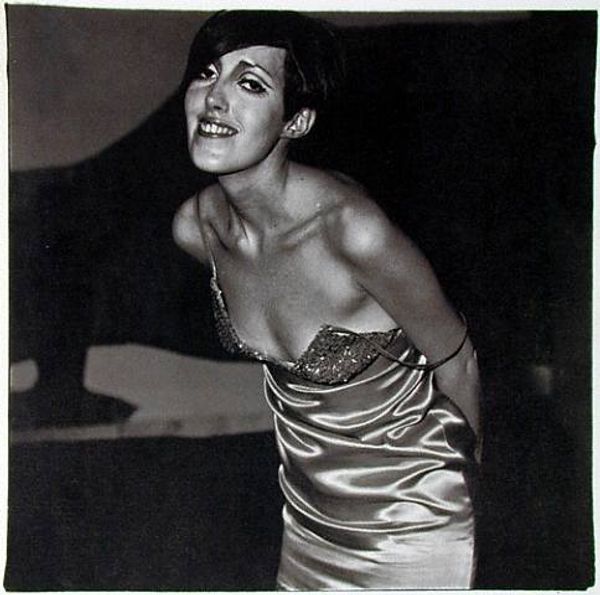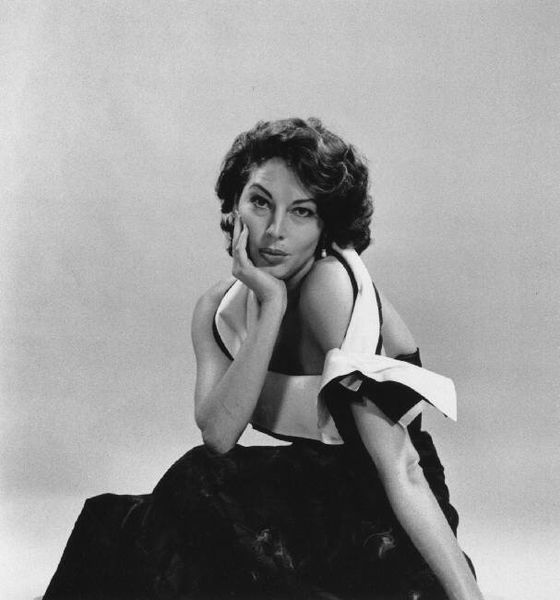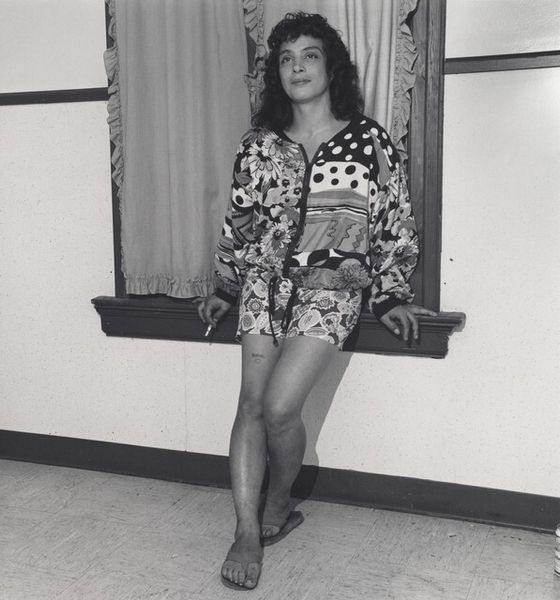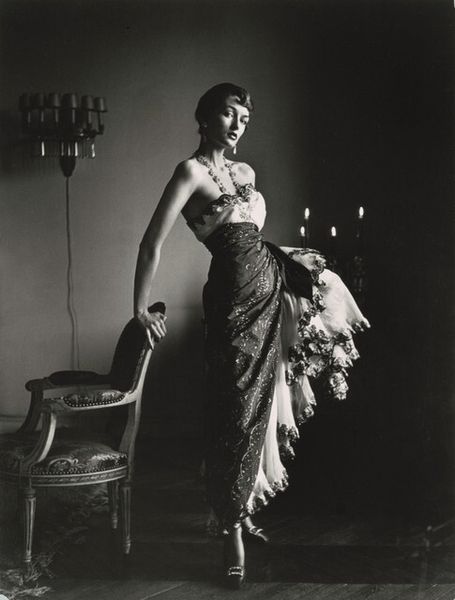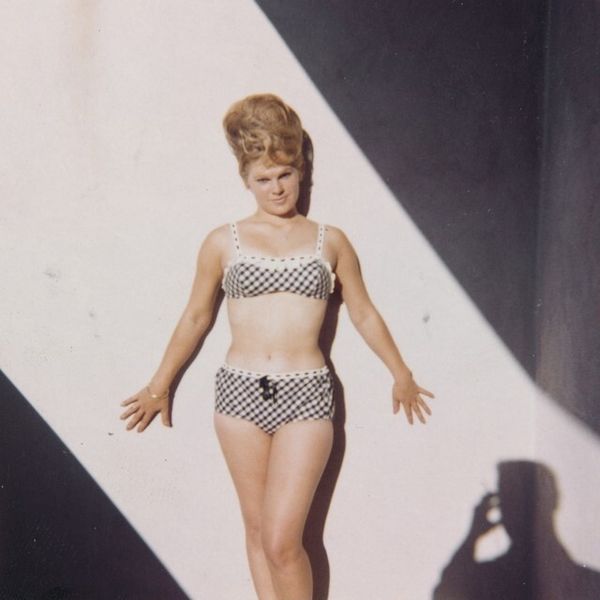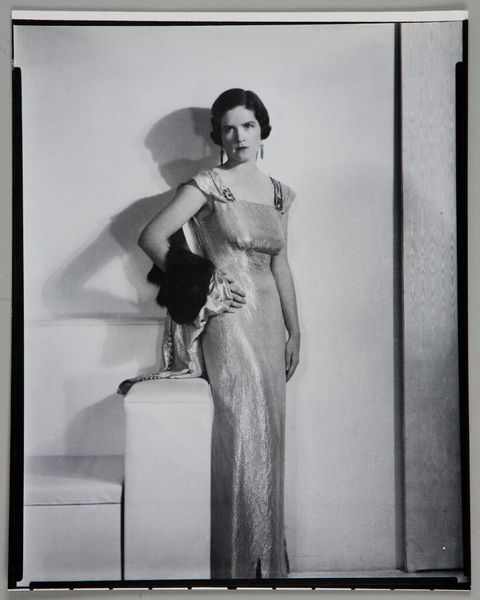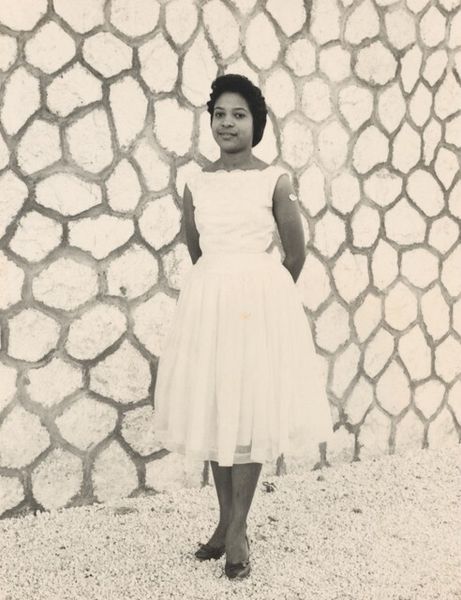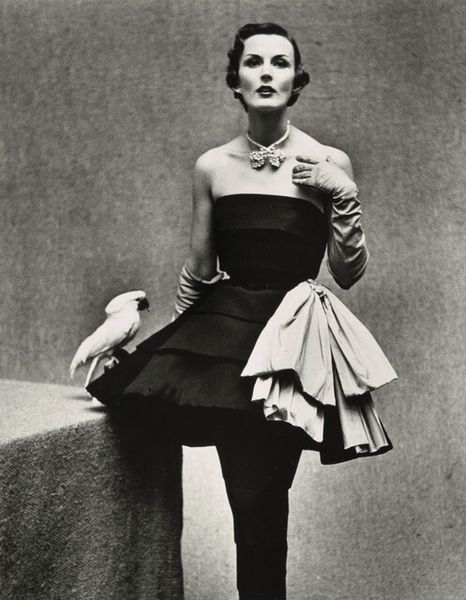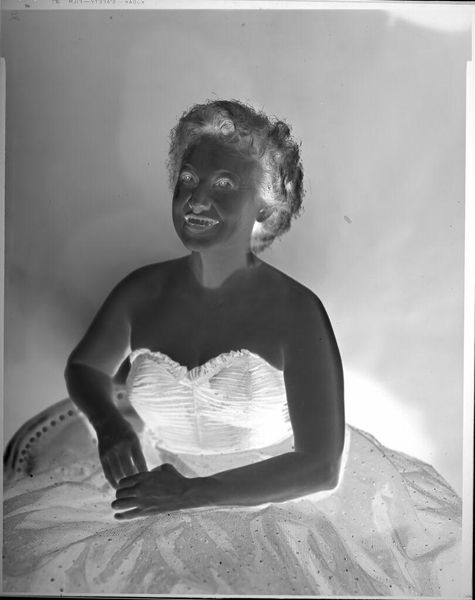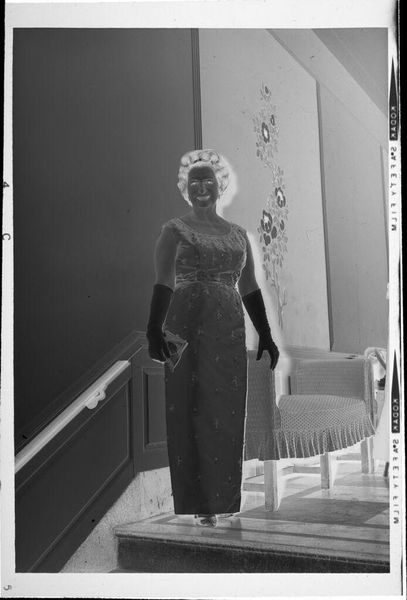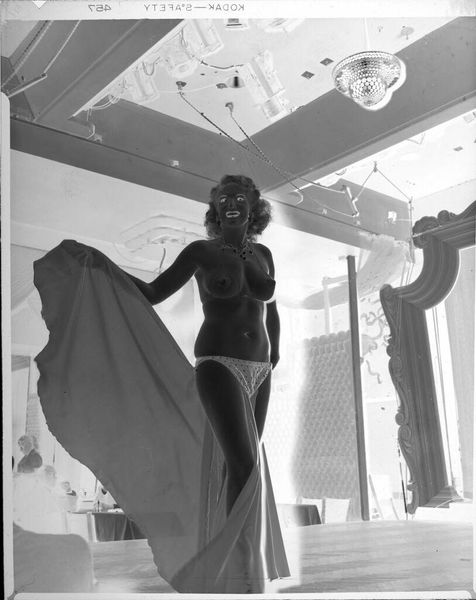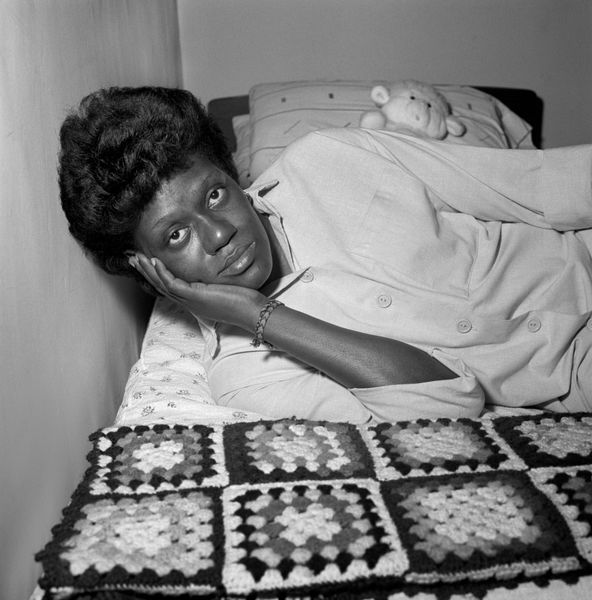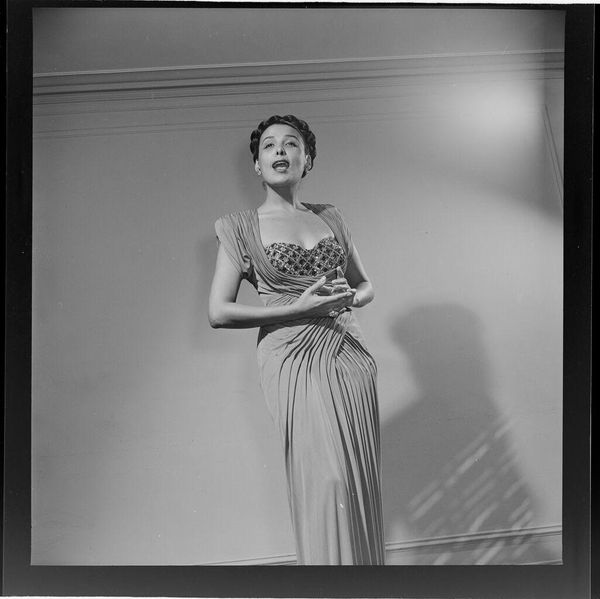
photography, gelatin-silver-print
#
portrait
#
black and white photography
#
figuration
#
photography
#
black and white
#
gelatin-silver-print
#
monochrome photography
#
genre-painting
#
monochrome
#
realism
#
monochrome
Copyright: Ralston Crawford,Fair Use
Editor: Here we have Ralston Crawford's gelatin silver print, "Dancer at the Dew Drop Inn". It's a black and white photograph and, beyond the pose, the details in her dress really capture my attention. How do you see this photograph, in terms of Crawford's other work? Curator: Crawford’s usual focus on industrial landscapes is absent here, isn't it? But even in this departure, his attention to form and, particularly, the *making* of things remains. Look at the textures! The coarse ceiling juxtaposed with the dancer's smooth skin and the delicate, almost flimsy fabric of her costume. It's about labor and what is produced; in this case, entertainment and the body. Editor: So you see a connection through the attention to different kinds of materials. That’s interesting. Does the “Dew Drop Inn” add to that in any way? Curator: Absolutely. It invites us to consider the social context - the location, the bar or inn, its materials likely simple, and then consider this performer as labor for the patrons there. The gelatin silver process is relatively accessible – what does it say about Crawford’s role to photograph this woman? Editor: So it is about thinking of what and who is *needed* for the picture to happen? Crawford's presence, the subject, and her environment? It expands my idea of what a portrait is. Curator: Exactly. It isn’t just the image, it is the production. We consider what went into creating it and the hands it passed through. This extends beyond aesthetics and forces a question: how do these combined elements create a meaning? Editor: This has changed how I understand Crawford’s practice! Looking closely at those materials shifts everything, from being a beautiful portrait to thinking about artistic intention.
Comments
No comments
Be the first to comment and join the conversation on the ultimate creative platform.
